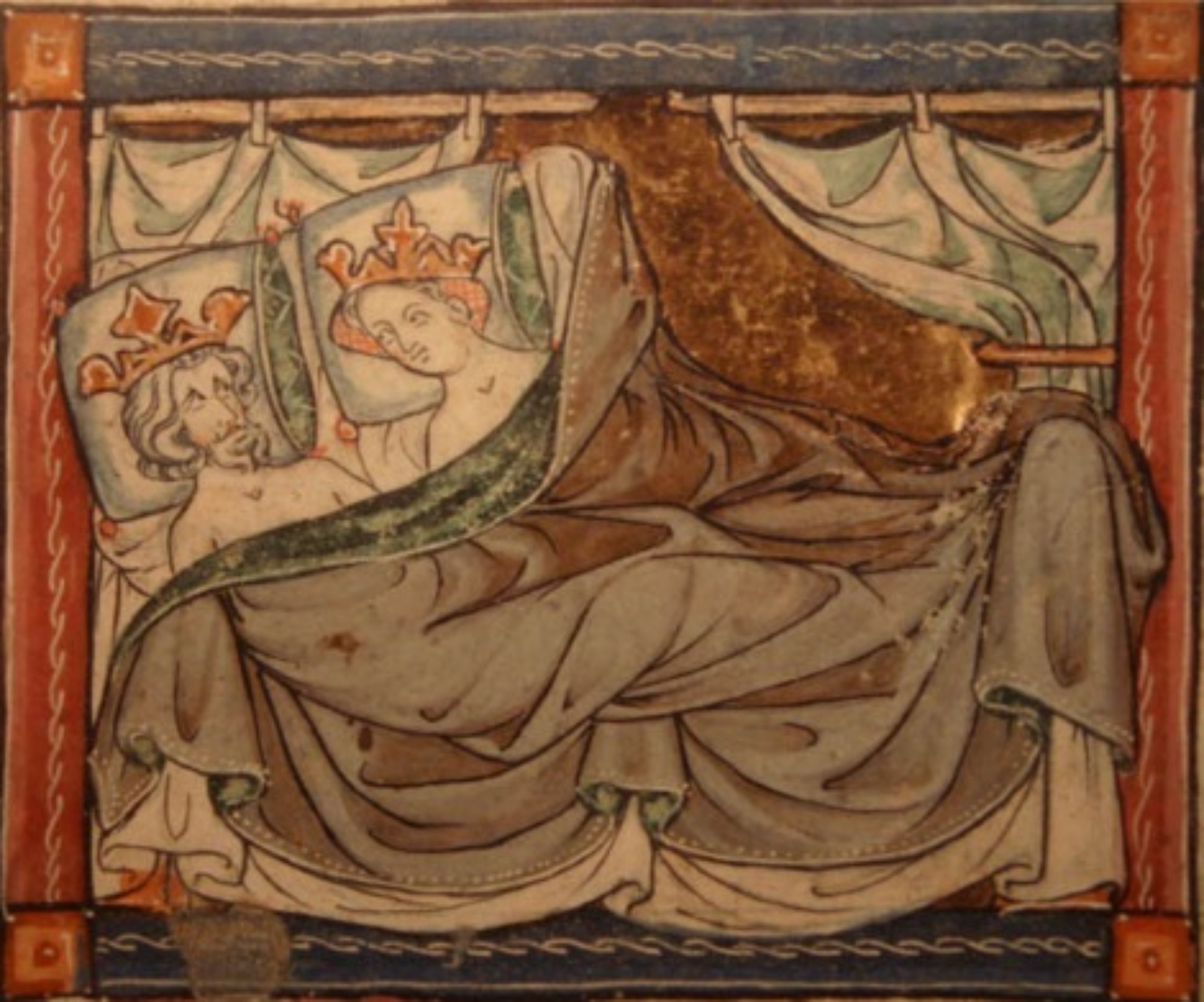Your basket is currently empty!

Who was Nest of Deheubarth? (Part I)
This is a blog post from our guest writer, Marged Berry. It dives into the history of Nest of Deheubarth and her oftentimes troublesome, most times misunderstood, reputation.
Nest of Deheubarth, or Nest ferch Rhys, has something of a reputation in Welsh history, and it’s not necessarily a flattering one. She’s often known as the “Helen of Wales”, a seductress of kings, a woman of easy virtue who lived a very colourful life on account of her many children and their different fathers. Alternatively, she’s described as a romantic heroine, a reputable beauty, complicit in her famous kidnapping by Owain ap Cadwgan, Prince of Powys and figurehead of resistance during the Norman Conquest.
The truth is probably something quite different.
Origins of Nest of Deheubarth
Nest was born sometime around 1085 in the ancient kingdom of Deheubarth in South Wales. At that time, Wales existed as several independently ruled kingdoms, each with its own fierce identity. She was the daughter of Rhys ap Tewdwr, king of Deheubarth, and his wife Gwladys, herself descended from the royal lineage of Powys.
In 1093, Nest’s life as she knew it changed forever, when her father was killed in battle at Aberhonddu by the men of Bernard de Neufmarché, a Norman who had firmly ensconced himself as ruler of Brycheiniog. Nest’s two brothers were underage; Gruffydd, the oldest, fled to safety in Ireland, and Hywel was taken into Norman captivity. Nest had older half brothers too; they were either killed or imprisoned, leaving Deheubarth open for the taking.
Within weeks, Deheubarth was overrun. Cadwgan ap Bleddyn, king of neighbouring Powys, attacked from the south, whilst Roger de Montgomery, the first Earl of Shrewsbury, led an invasion from England with his third son, Arnulf. By the end of 1093, Arnulf de Montgomery had established himself as the new lord of Pembroke. It is into Montgomery hands that Nest likely fell. As the daughter of a Welsh king, she would have been considered a valuable prize, and it is probable that she was sent away to the Montgomery family’s holdings in England, perhaps to Shrewsbury itself, to be raised as a Norman lady.
Norman Life
Whilst the male heirs of Rhys ap Tewdwr had to be eradicated, the Normans would have viewed Nest quite differently. Under Welsh law, she couldn’t transmit ownership of land, but under Norman law, she was an opportunity – marriage to her would confer legitimacy to an invader’s claim on Deheubarth.
In the years that followed, it’s likely that Nest came to the attention of the English King, William II, known as Rufus. The Montgomery family were ambitious and had involved themselves in rebellion, and it’s possible that William Rufus viewed them as untrustworthy guardians of a royal princess. In any event, at some point in her life she came across Henry, the King’s younger brother, and bore him a child (another addition to his brood of many illegitimate children). Was she taken advantage of, or was she a willing mistress? We don’t know, but it’s my view that she was pragmatic –
she had to be – and would have done what was needed to survive.
In 1100, William Rufus was killed by an arrow whilst hunting, and Henry, third son of William the Conqueror, seized the throne of England, becoming Henry I. Then, in around 1104, Nest found herself returning to Wales, but this time as a wife to Gerald de Windsor.
Nest of Deheubarth & Gerald de Windsor
Gerald was constable of Pembroke Castle and had for years been Arnulf de Montgomery’s senior representative there. Arnulf was now a rebel in exile, but Gerald remained in Pembrokeshire, choosing not to follow his lord to Normandy. Gerald was no noble, and this would have been an excellent match for him. Less so for Nest, but perhaps this was a calculated move from Henry I; after all, Nest was now safe from the grasping Norman lords vying for power in South Wales, and Gerald, a seasoned warrior in Deheubarth, owed Henry his unwavering loyalty.
In the years that followed, Nest bore Gerald several children, and lived in the
kingdom of her forefathers, though now as a Norman lady. The fate of her brothers must have played on her mind.
Then, we come to the event for which Nest is most famous. It’s 1109, Christmas, and Cadwgan ap Bleddyn, King of Powys hosts a feast for all his nobility. The guest of honour is his eldest son, Owain ap Cadwgan, Prince of Powys. The year before, Gerald had built a new castle at Cenarth Bychan, widely acknowledged today as the site of Cilgerran Castle, very close to the border of the old kingdom of Ceredigion – its overlordship claimed by Deheubarth but also the kings of Powys and Gwynedd.
The castle was fortified with ditches and walls and the latest modern amenities, and Gerald installed Nest and his children there. Whether this was seen as a deliberate act of provocation by Owain, we don’t know, but something compelled him to visit Cenarth Bychan, where he saw Nest and apparently fell in love with her.
Owain ap Cadwgan
The account of what followed is described in detail in Brut y Tywysogion, one of the most important primary sources of Welsh history. Owain, with a small force, attacked the castle by night, scrambling over the ditch and walls and setting fire to the buildings within. He and his men then surrounded the building in which Nest and Gerald were asleep. It is recorded that Nest persuaded Gerald to escape via the garderobe chute, and then spoke to Owain and his men and informed them of Gerald’s absence. Owain then entered the chamber, and after searching for Gerald and finding him gone, seized Nest and her children and carried them off, plundering
the castle as they left.
There is more than one Welsh translation of the Brut and this is where accounts differ; one translation records that Nest was raped by Owain before being carried off, another implies consensual intercourse, and yet another version is silent on the matter.
But was Nest complicit? Did she fall in love with Owain, as he apparently did with her, and deceive Gerald into leaving the castle without defending her and their children? Her abduction delivered a considerable insult to Gerald, and the political consequences were significant, but would she really have risked her position, her marriage, and most of all the lives of her children, by conspiring with Owain? Or was this an act of resistance on her part after years of living as the property of the Normans, who she may have held responsible for the fate of her family?
It appears that she stayed with Owain for over a year, and possibly bore him a child (or children), before returning to Gerald. The details and reasons why she remained so long, and then returned, are a mystery, but happily conjecture is permissible in historical fiction, and I have my own views on Nest’s story.
What happened next? That is a tale for another day. What’s certain though, is that hers was a life of divided loyalties, and she must have had to play a shrewd political game to survive.
Guest Writer – Marged Berry
Marged worked as a solicitor before moving into a career in international business. Her passion, however, is historical fiction – both reading and writing it! Her first Welsh language novel will be published by Y Lolfa in 2025. Marged also hosts a Welsh language podcast – Sgribls – about writing and the publishing industry in Wales.
More from Welsh Histories
Welsh Histories is a Welsh history celebrating platform which looks to promote all aspects of Welsh history. Though we focus predominantly on native Welsh history, we do also share the non-native aspects from time to time. You can follow us on Facebook; Instagram or Twitter for more. A reader? We also have our very own Welsh Histories Shop where we sell our Welsh Histories Magazine. Diolch yn fawr iawn and keep enjoying Welsh Histories.


Comments
One response to “Who was Nest of Deheubarth? (Part I)”
I loved this article and wanted to put 5 stars but it wouldnt let me and only let one!
I loved the fact it was written in such an interesting manner that was easy to digest. Well done…5 stars definitely!